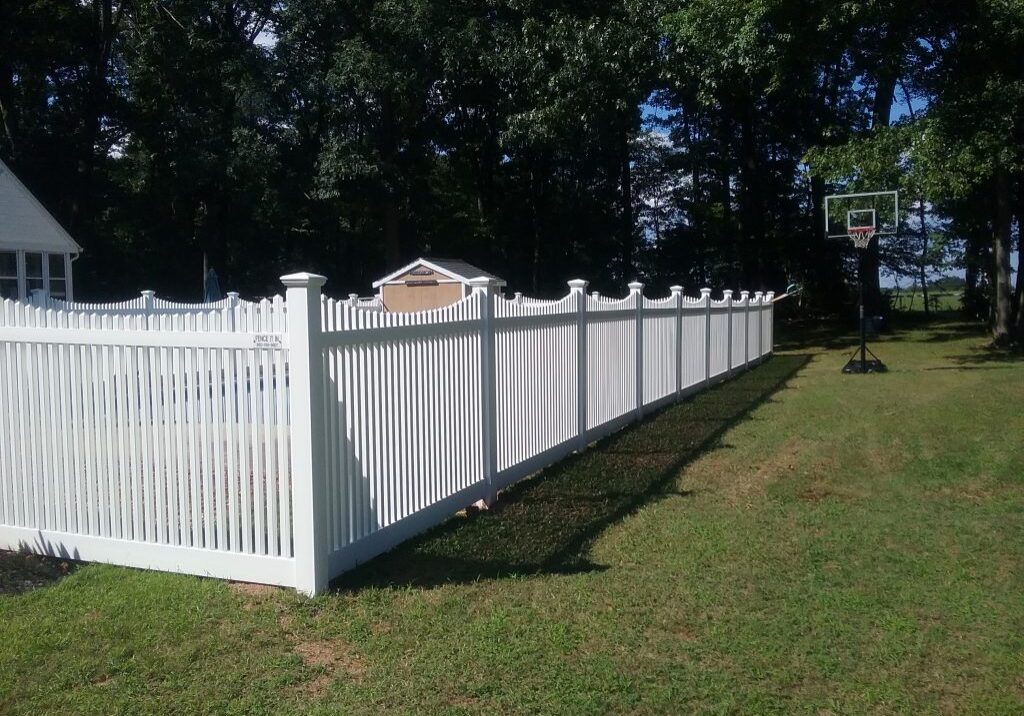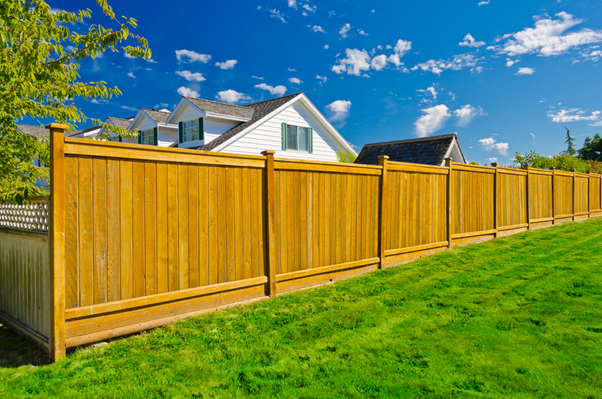All Categories
Featured
Choosing the optimum elevation calls for cautious factor to consider of a number of variables, including local policies, your protection requires, and the kind of fence material you choose. Here's an overview to help you make the finest decision when determining your fence elevation for maximum safety.
![]()
In some locations, you may likewise need a license for fencings taller than a specific height. In addition, make certain you are aware of any area guidelines, especially if you reside in a community with a home owners' organization (HOA) that implements details policies on fencing material, style, and height.
The goal is to make it testing for anyone to quickly scale or breach the fencing. Taller fencings reduce the threat of burglaries, particularly when incorporated with various other deterrents like sharp messages or trellis extensions on top. If your building lies in a high-crime location or you are worried about intruders, choosing a taller fencing can substantially increase your comfort.
![]()
Wrought Iron Fences: These are commonly 6 to 8 feet high and are perfect for safety functions. The toughness and durability of functioned iron make it challenging for burglars to appear or climb. Wood Fencings: While wooden fencings offer personal privacy, their protection depends upon their height and layout. A solid wood fencing that goes to the very least 6 feet high can serve as a strong obstacle, yet adding attributes like anti-climb tops can enhance its security. Chain-Link Fences: Chain-link fencings are typically selected for their cost-effectiveness and strength. To enhance protection, numerous home owners include barbed or razor cable to the top of the fence or boost its height to 8 feet or even more. When picking a product, take into consideration the compromises in between visual appeal and protection. Materials like wood or plastic provide privacy yet may not be as difficult to climb as metal fencings, while functioned iron or steel fences supply toughness and boosted safety.
On the various other hand, if exposure is a top priority-- particularly for surveillance functions or to ensure that next-door neighbors can see suspicious task-- then a shorter, extra clear fence might be excellent. Chain-link fences, while providing much less personal privacy, enable better presence, making it simpler for passersby or neighbors to detect anyone attempting to breach your fencing.
Anti-Climb Functions: Add trellis expansions, directed tops, or barbed wire to make it more tough for burglars to scale the fence. Movement Sensors and Security Cameras: Positioning cameras along your fencing line or installing activity detectors can help determine questionable activity and better prevent invaders. Electric Fence: For greater levels of protection, think about adding an electric fencing to your existing fence. These systems are designed to supply a moderate shock to any person who tries to touch or climb up the fencing. 6. Consider Aesthetics and Community Influence. While security is the key concern, it's additionally essential to take into consideration the looks of your fence, particularly if you reside in an area with a solid feeling of community. A fencing that is also high or imposing can develop a hostile ambience and might not be well-received by neighbors.
Consider your neighborhood's overall visual and choose a fence elevation that stabilizes both protection and visual allure. A fencing that is aesthetically appealing while still providing sufficient security can boost both the appearance and the safety of your building.
Conclusion. Choosing the right fence elevation for optimal protection calls for balancing practicality, appearances, and local policies. In basic, a fencing height of 6 to 8 feet is optimal for offering appropriate protection against trespassers, though taller fences can be utilized for added safety and security if needed.
- Understand Local Regulations and Zoning Rules. Before you choose a fencing height, it's vital to talk to your local town or house owners' association to make sure that you remain in compliance with neighborhood zoning regulations and laws. The majority of areas have restrictions on the elevation of fencings, particularly in front lawns or along property lines. As an example, residential surround front backyards are typically restricted to an elevation of 3 to 4 feet, while backyard fences can be higher-- frequently approximately 6 to 8 feet or more.

In some locations, you may likewise need a license for fencings taller than a specific height. In addition, make certain you are aware of any area guidelines, especially if you reside in a community with a home owners' organization (HOA) that implements details policies on fencing material, style, and height.
- Consider Your Security Requirements. The elevation of your fencing plays an essential role in the degree of protection it provides. A fence that is too brief might be very easy to jump or climb over, while a taller fencing can act as a stronger deterrent versus intruders. For optimal safety and security, consider a fencing elevation of a minimum of 6 feet, with lots of property owners choosing 8-foot fences or higher when safety is a leading priority.
The goal is to make it testing for anyone to quickly scale or breach the fencing. Taller fencings reduce the threat of burglaries, particularly when incorporated with various other deterrents like sharp messages or trellis extensions on top. If your building lies in a high-crime location or you are worried about intruders, choosing a taller fencing can substantially increase your comfort.
- Select the Right Fencing Material. The material of the fence you select also influences the safety it supplies. Some materials offer more durable protection than others, also at the very same elevation. As an example:

Wrought Iron Fences: These are commonly 6 to 8 feet high and are perfect for safety functions. The toughness and durability of functioned iron make it challenging for burglars to appear or climb. Wood Fencings: While wooden fencings offer personal privacy, their protection depends upon their height and layout. A solid wood fencing that goes to the very least 6 feet high can serve as a strong obstacle, yet adding attributes like anti-climb tops can enhance its security. Chain-Link Fences: Chain-link fencings are typically selected for their cost-effectiveness and strength. To enhance protection, numerous home owners include barbed or razor cable to the top of the fence or boost its height to 8 feet or even more. When picking a product, take into consideration the compromises in between visual appeal and protection. Materials like wood or plastic provide privacy yet may not be as difficult to climb as metal fencings, while functioned iron or steel fences supply toughness and boosted safety.
- Privacy and Exposure Considerations. If personal privacy is a substantial problem, specifically in suburbs, you might choose a taller fence that blocks the view from the exterior. Solid timber or plastic fencings that are 6 to 8 feet high can prevent others from seeing into your property, which helps raise protection by lowering the likelihood of intruders scouting your home.
On the various other hand, if exposure is a top priority-- particularly for surveillance functions or to ensure that next-door neighbors can see suspicious task-- then a shorter, extra clear fence might be excellent. Chain-link fences, while providing much less personal privacy, enable better presence, making it simpler for passersby or neighbors to detect anyone attempting to breach your fencing.
- Added Safety And Security Functions to Improve Height. While elevation is an essential part of safety, it's important to bear in mind that a tall fencing alone may not be adequate to discourage figured out intruders. Think about incorporating your fence with various other safety features for optimum protection:
Anti-Climb Functions: Add trellis expansions, directed tops, or barbed wire to make it more tough for burglars to scale the fence. Movement Sensors and Security Cameras: Positioning cameras along your fencing line or installing activity detectors can help determine questionable activity and better prevent invaders. Electric Fence: For greater levels of protection, think about adding an electric fencing to your existing fence. These systems are designed to supply a moderate shock to any person who tries to touch or climb up the fencing. 6. Consider Aesthetics and Community Influence. While security is the key concern, it's additionally essential to take into consideration the looks of your fence, particularly if you reside in an area with a solid feeling of community. A fencing that is also high or imposing can develop a hostile ambience and might not be well-received by neighbors.
Consider your neighborhood's overall visual and choose a fence elevation that stabilizes both protection and visual allure. A fencing that is aesthetically appealing while still providing sufficient security can boost both the appearance and the safety of your building.
Conclusion. Choosing the right fence elevation for optimal protection calls for balancing practicality, appearances, and local policies. In basic, a fencing height of 6 to 8 feet is optimal for offering appropriate protection against trespassers, though taller fences can be utilized for added safety and security if needed.
Latest Posts
Protect Your Home with High Quality Residential Roof Covering
Published May 03, 25
1 min read
Searching for Comprehensive Auto Repair Near Me? Car-X St. Louis Ensures Satisfaction and Convenience
Published May 03, 25
1 min read
Strategic Campaign Monitoring That Drives Outcomes
Published May 03, 25
1 min read
More
Latest Posts
Protect Your Home with High Quality Residential Roof Covering
Published May 03, 25
1 min read
Searching for Comprehensive Auto Repair Near Me? Car-X St. Louis Ensures Satisfaction and Convenience
Published May 03, 25
1 min read
Strategic Campaign Monitoring That Drives Outcomes
Published May 03, 25
1 min read